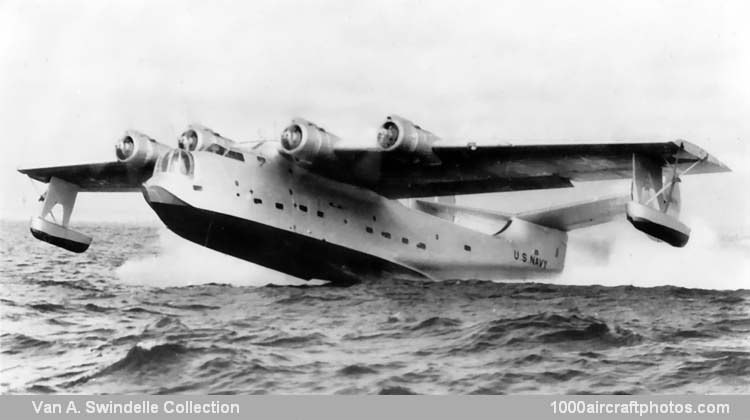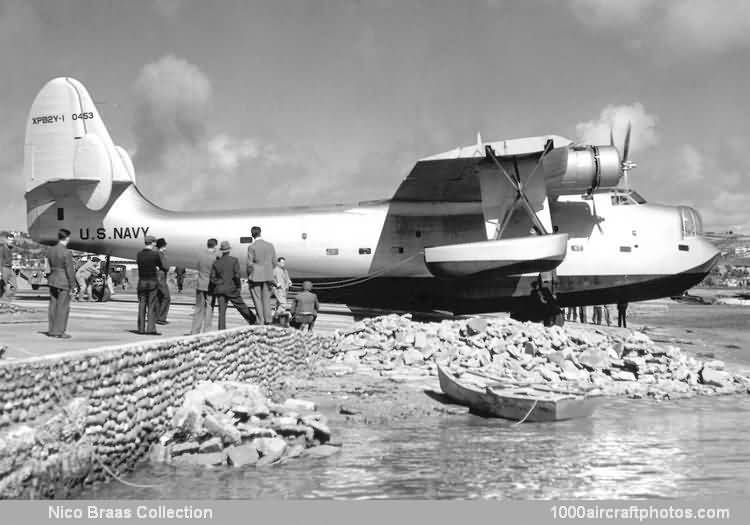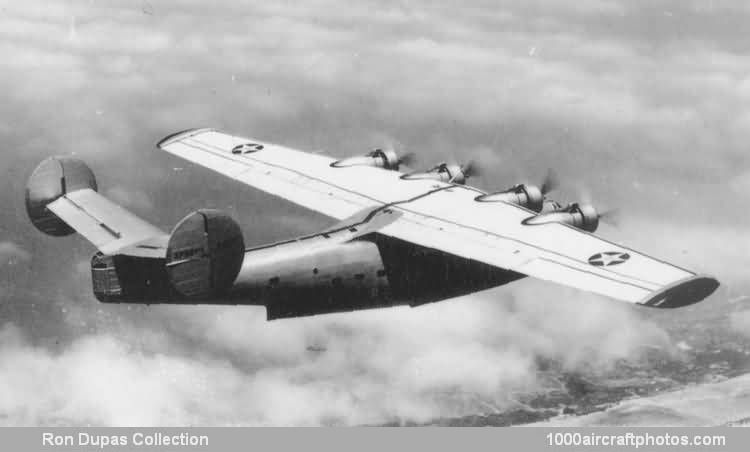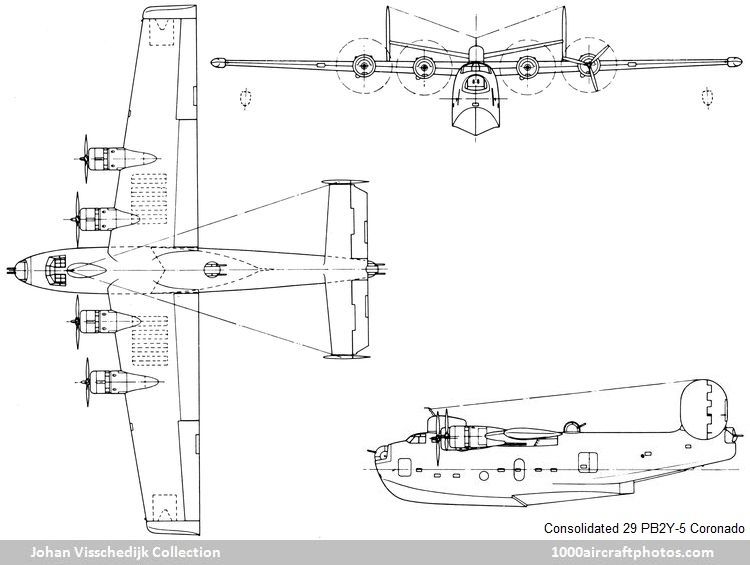VAN A. SWINDELLE COLLECTION
No. 10215. Consolidated 29 XPB2Y-1 Coronado (0453) US Navy
11/30/2010. Remarks by
Johan Visschedijk: "Within three months of the first flight of the Consolidated XP3Y-1 prototype Catalina, the USN was making plans for the development of much larger flying boats with better operational performance. Prototypes were ordered from Sikorsky and Consolidated, respectively in June 1935 and July 1936, of large four-engine flying boats in the patrol bomber category. The Consolidated design, Model 29, made use of retractable wing tip floats similar to those on the Catalina, but in all other respects it was a wholly new design with a high-mounted wing and a capacious hull with accommodation for a crew of ten.
First flown on December 17, 1937, the XPB2Y-1, as Consolidated's boat was designated by the USN, was powered by four 1,050 hp Pratt & Whitney XR-1830-72 Twin Wasp engines and had an armament of two 0.50 in (12.7 mm) guns (nose and tail) and three 0.30 in (7.62 mm) guns (two waist and one tunnel). As first tested, it had a tall single fin and rudder, and it showed serious directional instability. In an effort to solve the problem, two small fins were installed on the tail plane.
XPB2Y-1 with small fins on tail plane (
Nico Braas Memorial Collection)
In this form it flew on February 28, 1938, but this modification proved inadequate. Instead the complete tail was redesigned with twin fins and rudder it was reflown again in July 1938.
XPB2Y-1 with twin fins with rudder (
Ron Dupas Collection)
With almost all USN flying boat procurement limited to PBYs, orders for the big new aircraft were delayed until March 31, 1939, when Consolidated received a contract for six PB2Y-2s, each costing as much as three PBYs. They had R-1830-78 engines with two-stage superchargers, increased armament of six 0.50 in (12.7 mm) guns and a redesigned, deeper hull. Despite higher operating weights, the PB2Y-2 achieved 255 mph (410 kmh) at 19,000 ft (5,791).
The first PB2Y-2 (
BuNo. 1633) was flown November 22, 1940, and was initially used by Consolidated as a test bed. The first to be delivered reached Patrol Squadron 13 (VP-13) on December 31, 1940. A further production contract placed on November 19, 1940, established the PB2Y-3 in production, with R-1830-88 engines, self-sealing fuel tanks and eight 0.50 in (12.7 mm) guns. These Coronados, as the type was named, often carried ASV radar in a fairing just behind the cockpit. In all, 210 PB2Y-3s were built.
Little operational use was made of the PB2Y-3, but ten PB2Y-3Bs supplied to Britain under lend-lease as Coronados were operated on freight services across the Atlantic to and from the United Kingdom, and subsequently 31 for the USN were converted to PB2Y-3R transports with R-1830-88 engines, faired-over turrets and other modifications.
Some of the other PB2Y-3s became PB2Y-5s and PB2Y-5Rs when fitted with low-altitude R-1830-92 engines and increased fuel capacity, or PB2Y-5Hs with the same modifications plus cabin arrangements for 25 stretchers. A single example with Wright R-2600 Cyclones was designated XPB2Y-4. The Coronados were withdrawn from active service before the end of 1945."



